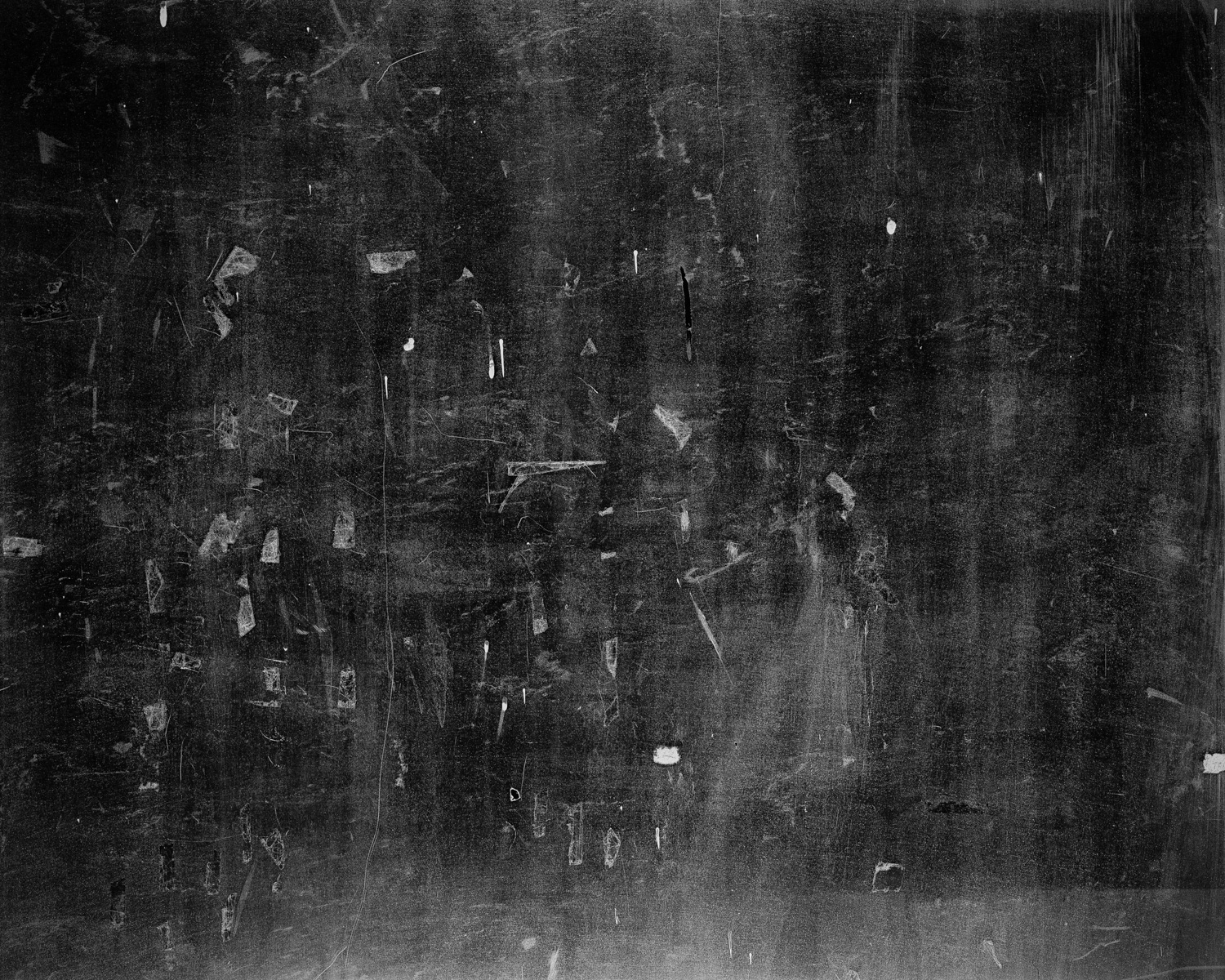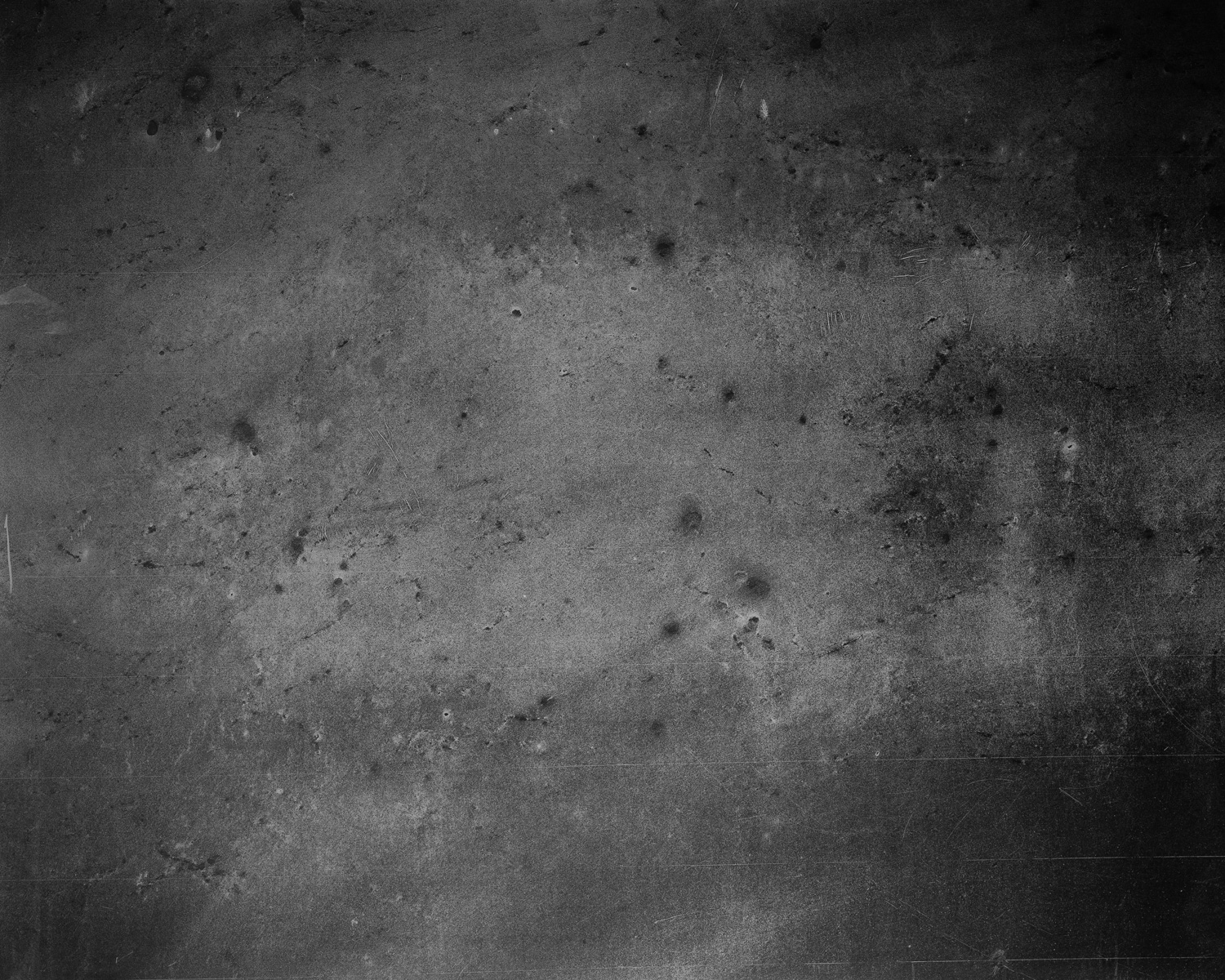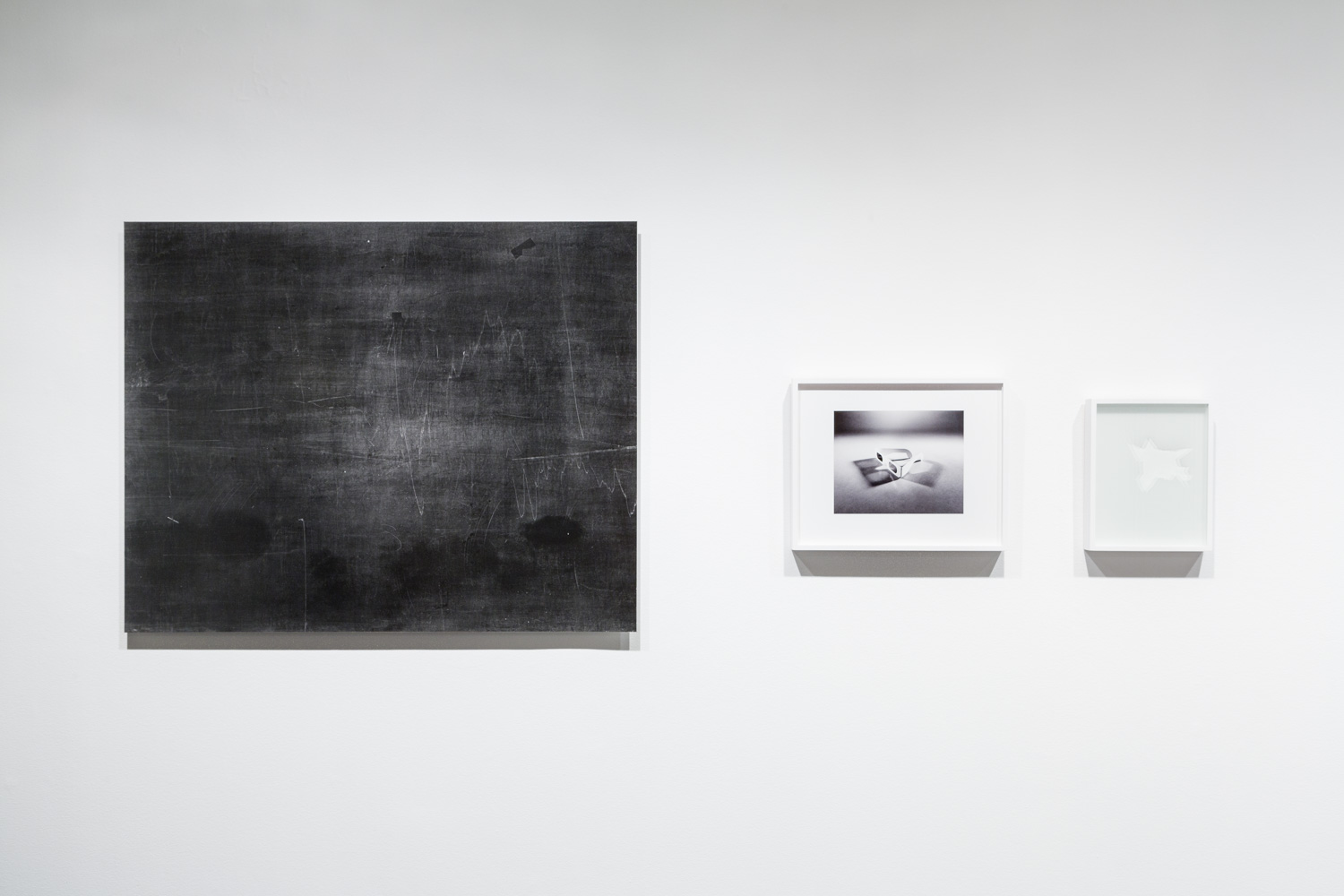None of the Things It Contemplates Is Present
The chalkboard was once considered to be distortion-free, and a photograph was once considered a transparent window into the world. By photographing chalkboards with film, the syntax of both technologies becomes apparent. The temporary schematics drawn on these boards to emphasize abstract ideas are now embedded in the slate. A functional chalkboard has no history; a used chalkboard is history. What was once empty is now full of information.
“Gamber’s work employs one mode of technology to comment on another. A product of the Industrial Revolution, the chalkboard predates the first permanent photograph by almost 25 years, 5 representing a technological advancement where written information could be recorded and broadcast to large audiences.
The chalkboard was once considered to be distortion-free, and a photograph was once considered a transparent window into the world. By photographing chalkboards with film, the syntax of both technologies becomes apparent. The temporary schematics drawn on these boards to emphasize abstract ideas are now embedded in the slate. A functional chalkboard has no history; a used chalkboard is history. What was once empty is now full of information.
“Gamber’s work employs one mode of technology to comment on another. A product of the Industrial Revolution, the chalkboard predates the first permanent photograph by almost 25 years, 5 representing a technological advancement where written information could be recorded and broadcast to large audiences.
Today, the film works similarly; that is to say, the information it contains (or is recorded)
is used to produce a photograph, which is then used to communicate ideas to an audience visually.
Film and the chalkboard are
comparable because their usefulness is rooted in their ability to
record and disseminate information.
The chalkboard’s temporal limitations for holding
information do not detract from its efficacy. Its primary function is
to be marked, erased, and overwritten. Over time, this function transforms the chalkboard into a monochromatic, abstract, expressionistic painting. In looking at these pieces, one may
recall Concord, an abstract painting by Barnett Newman.
Comparable to Newman’s painting, Gamber’s photographs
depict chalkboards embedded with white chalk residue,
random lines, shapes, and shades of grey. For a moment, these
photographs pretend to be paintings, acting as if, like Newman’s
Concord, they never existed in the real world.”







